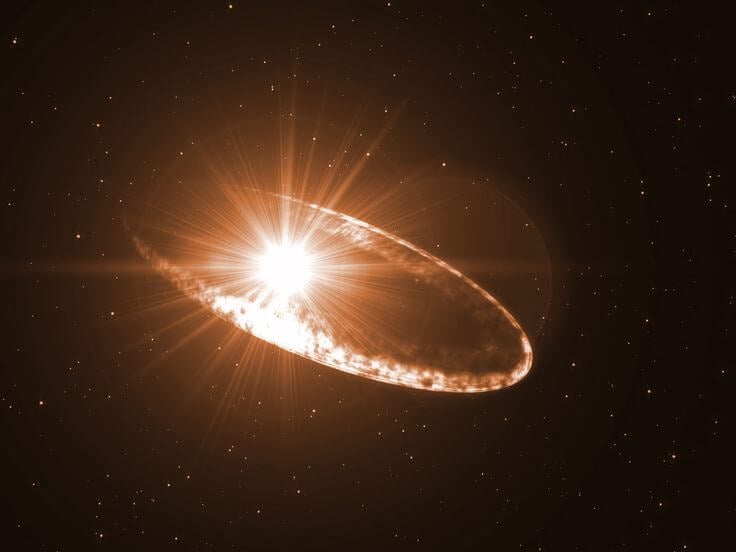Interstellar travel is not an easy task for future explorers of the universe. Due to the huge distances separating stellar systems from each other, the transport of the future will have to learn how to use physical forces not subject to modern man. But what if everything can be much simpler than previously thought? According to the Universe Today portal , our descendants will be able to travel between stars on ships moving through time and space at the speed of light. In order to make humanity's dream a reality, vehicles of the future will use hyper-speeding stars and meteors accelerated by supernova explosions. So can humanity's dream of conquering the universe ever come true?
Spaceships of the future will be able to use the energy of supernova stars
Can I reach other stars?
Man has always dreamed of conquering a cold and lifeless cosmos, beckoning with its inaccessibility and mystery. Deciding to give hope to humanity, Harvard professors Manasvi Lingam and Abraham Loeb conducted an interesting study of how interstellar spaceships can use the waves caused by a supernova explosion , similar to sailing ships using wind power for their movement. Operating on the explosive power of distant stars, the spacecraft of the future would move with the help of a light magnetic sail. By generating movement in such an unusual way, the ship of the future would not need engines or fuel to operate.
See also: Does the speed of light affect aging?
The well-known Breakthrough Starshot project , in which Russian businessman Yuri Milner plans to travel to the Alpha Centauri star, will develop the fastest spacecraft in the history of mankind. It is known that a device called Starshot will use special lasers for its movement, allowing it to achieve a speed significantly higher than that which would be possible using only solar radiation.
The Starshot project, invented by Yuri Milner and Stephen Hawking, will be able to reach the closest star to us in 20 years
According to Milner’s idea, powerful lasers accelerating the device up to 20% of the speed of the speed of light will help us get to the nearest star systemin only a quarter of a century. However, experts from Harvard University decided not to stop at this indicator, having come up with an alternative to an expensive laser system. Researchers are sure that light sails with appropriate parameters can reach speeds close to light, if a powerful energy source, a supernova, is located in relative proximity to the mechanism. According to preliminary calculations, such “supernova surfing” can occur even if the star is located many millions of kilometers away from us: the energy from the explosion should still be enough for us to accelerate a small space sail to relativistic speeds.
A sail using supernova energy can differ from other vehicles by the presence of several advantages at once: reaching the speed of light, the device will not need expensive equipment or frequent repairs, however, it will have its own nuances. So, supernovae in our corner of the galaxy do not explode as often as we would like, and we can only calculate their appearance with an uncomfortably large error, which sometimes reaches several million years.
Among other things, there are also a number of engineering and design problems that we will need to solve before sending the device into space. First, we will need to come up with a special highly reflective material that can radiate excess heat and incoming light into outer space . Secondly, we will also have to carefully calculate the path of the device until it falls under the supernova explosion zone. Thirdly, the sail itself will have to have some kind of special type of shielding, since even the smallest particle crashing into the device at great speed will be able to cause a number of serious damage to the spacecraft.
Despite the fact that we have yet to study ways to solve such problems, scientists are optimistic. It is known that a number of experts suggest solving the difficulties that confronted them by creating not electric, but electric sails. Whether Yuri Milner will be able to use such technology when sending the Starshot mission, we will know quite soon: it is known that the Breakthrough Starshot mission will go on its epic space journey in 20 years.







No comments:
Post a Comment